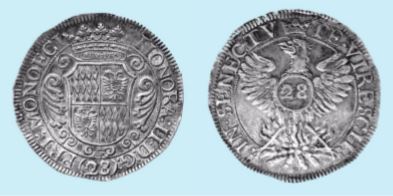THE PRINCIPALITY OF MONACO AND TRADE WITH THE LEVANT IN THE TIME OF THE LUIGINIS (17th CENTURY)
From Thursday 22 to Sunday 25 October 2020, from 10 am to 5 pm Musée des Timbres et des Monnaies
The Museum of Stamps and Coins is organising a sumptuous exhibition of exceptionally rare and very fine ancient coins, accompanied by archive documents and precious works from the time.
For a dozen years during the reign of Louis XIV, the Princes Honoré II and Louis I were the leading proponents of an economic and trade policy developed with the Ottoman Empire, then known as the "Levant" and now comprising only Turkey. Even before the 1659 Treaty of the Pyrenees formally ended hostilities in the Franco-Spanish War, Prince Honoré II of Monaco had forged commercial relations with the authorities of the Levant. From 1662 onwards, Colbert - who had succeeded Nicolas Fouquet as "French Ministry of Finance", organised an ingenious system whereby the Princess of Dombes, a cousin of Louis XIV, and Prince Louis I of Monaco, would be closely linked by issuing the coinage needed for commercial transactions.
Reality soon overtook the initial aims of the project's creators. The Turks became so besotted with the coins, bearing the portrait of the Princess of Dombes, that they overvalued them and paid up to twice their face value, turning them into a commodity in their own right. As a result, Louis I of Monaco, followed by various Genoese and Tuscan nobles from the Ligurian coast, had millions of small silver coins struck. These coins, which came to be known as "luiginis" bore portraits that were in fact outrageous copies of the likeness of the Princess of Dombes. Some unscrupulous speculators even cheated on the weight and title of their copies, for maximum profit. The proliferation of poor quality luiginis led the Ottoman authorities to ban them from circulation in 1669‐1670.
This prestigious new exhibition tells the incredible story of the "luigini".

Illustration: Honoré II "Phoenix" Tallero, of which there are two known examples (Musée des Timbres et des Monnaies and Cabinet des médailles de Marseille), believed to have been struck for the Levant to mark the wedding of the future Louis I.